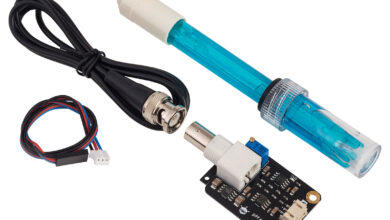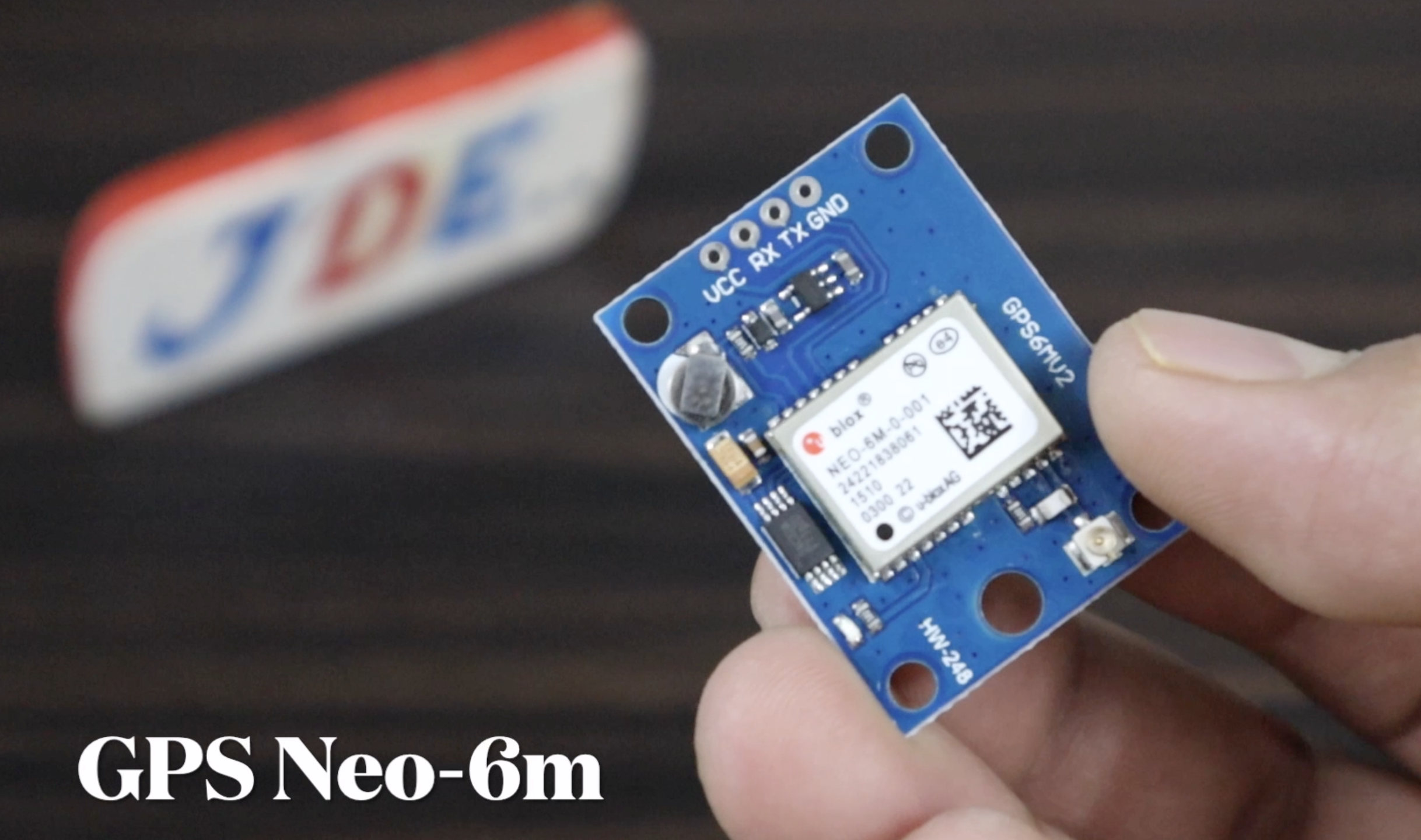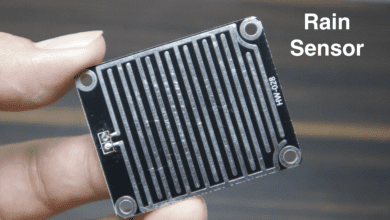
Introduction
The SCT-013 is a non-invasive AC current sensor that is commonly used for measuring alternating current (AC) in various electronic and electrical systems.
It provides a safe and convenient way to monitor current without the need to physically interrupt the circuit being measured.
- Sensitivity: The sensitivity of the SCT-013 sensor determines the output voltage for a given current. It is usually specified in millivolts per ampere (mV/A).
- Output Voltage: The output voltage of the sensor can be calculated by multiplying the sensitivity by the current being measured.
Amperes, the output voltage would be:
- Output Voltage = Sensitivity * Current
- Output Voltage = 30 mV/A * 10 A
- Output Voltage = 300 mV (or 0.3 V)
Principle of Operation
- The SCT-013-030 operates on the principle of magnetic induction. It consists of a toroidal (doughnut-shaped) core made of ferrite material. The core has a split in it, allowing it to be opened and clamped around the AC conductor carrying the current to be measured.
- Output Signal: The secondary winding of the SCT-013-030 is connected to a burden resistor, which converts the induced voltage into a current proportional to the measured current.
Specifications of the AC Current Sensor
- Current Rating: 30 Amperes .
- Turns Ratio: 1:1800 The turns ratio indicates the ratio between the number of turns in the secondary winding of the sensor to the number of turns in the primary winding.
- Output Voltage at Rated Current: Approximately 1 Vrms.
- Frequency Range:The SCT-013-030 is optimized for measuring AC currents in the frequency range of 50 Hz to 1 kHz.
- Non-linearity: ±3%
- Phase Shift: < 1 degree
- Output Connection: 3.5 mm audio jack.
Advantages of AC Current Sensor
- Non-invasive Measurement: The SCT-013-030 is a non-invasive current sensor, meaning it can measure AC currents without the need to physically interrupt or break the circuit being measured. This feature allows for safe and convenient current monitoring without the risk of electrical shock or circuit disruption.
- Easy Installation: The sensor is designed with a split core, allowing it to be easily opened and clamped around the AC conductor carrying the current to be measured. This design simplifies the installation process and eliminates the need for extensive wiring or circuit modifications.
Disadvantage of AC Current Sensor
- Limited Frequency Range
- Inaccuracy at Low Currents
Application of AC Current Sensor
- Energy Monitoring and Management: The SCT-013-030 is widely used for energy monitoring systems in residential, commercial, and industrial settings.
- Power Quality Analysis: The sensor is employed in power quality monitoring systems to assess the quality and stability of AC power.
- Smart Grid Systems: The SCT-013-030 plays a vital role in smart grid applications by providing current data for load monitoring and demand response systems.
Example with Arduino
Circuit diagram
Code With 16×2 LCD Display
|
1 2 3 4 5 6 7 8 9 10 11 12 13 14 15 16 17 18 19 20 21 22 23 24 25 26 27 28 29 30 31 32 33 34 35 36 37 |
#include <EmonLib.h> #include <LiquidCrystal.h> EnergyMonitor emon1; LiquidCrystal lcd(12, 11, 5, 4, 3, 2); int voltage = 230; int sct_pin = A0; void setup() { lcd.begin(16, 2); lcd.clear(); Serial.begin(9600); // calibration - Current Constant = Ratio/BurdenR. 1800/62 = 29. emon1.current(sct_pin, 29); lcd.setCursor(0,0); lcd.print("Current(A): "); lcd.setCursor(0,1); lcd.print("Power(W): "); } void loop() { double Irms = emon1.calcIrms(1480); Serial.print("Current: "); Serial.print(Irms, 2); // Irms lcd.setCursor(10,0); lcd.print(Irms, 2); double power = Irms*voltage; Serial.print(" Power: "); Serial.print(power, 2); lcd.setCursor(10,1); lcd.print(" "); lcd.setCursor(10,1); lcd.print(power, 2); delay(1000); } |
Conclusion
The SCT-013 AC current sensor is a non-invasive device that allows for the safe and convenient measurement of AC currents in various applications.
Sensor








